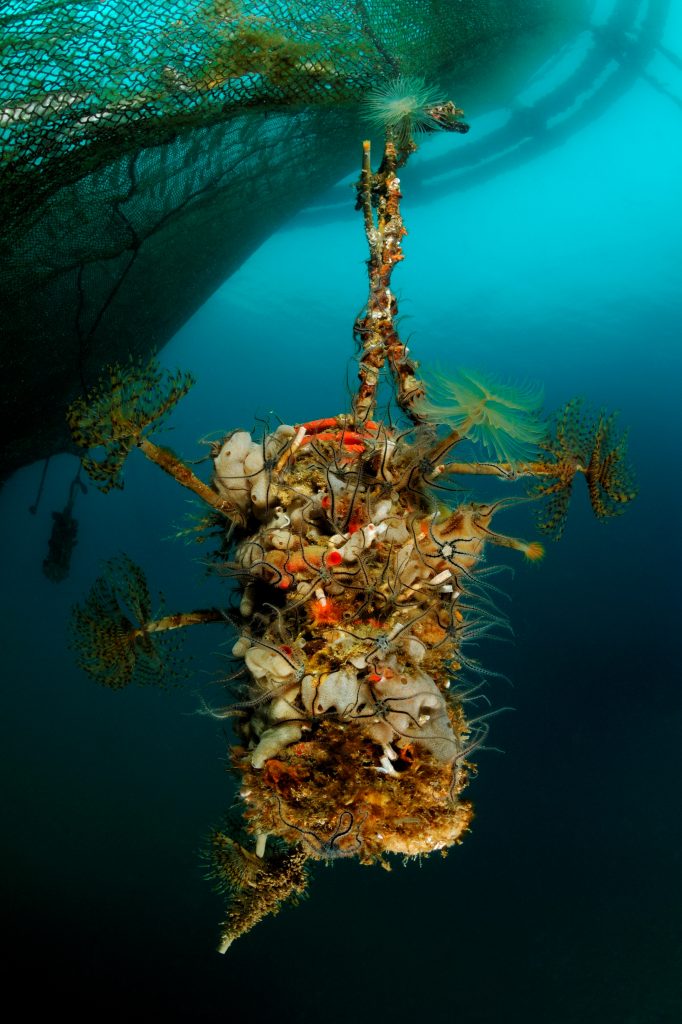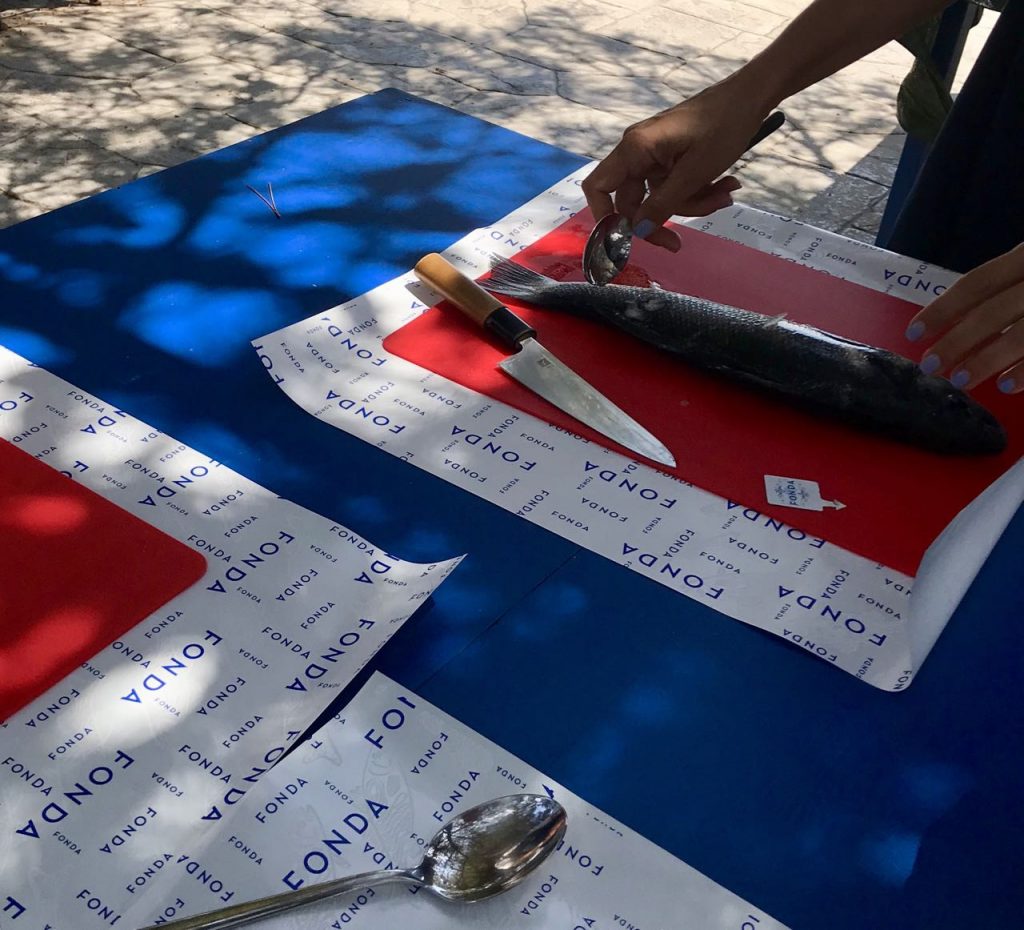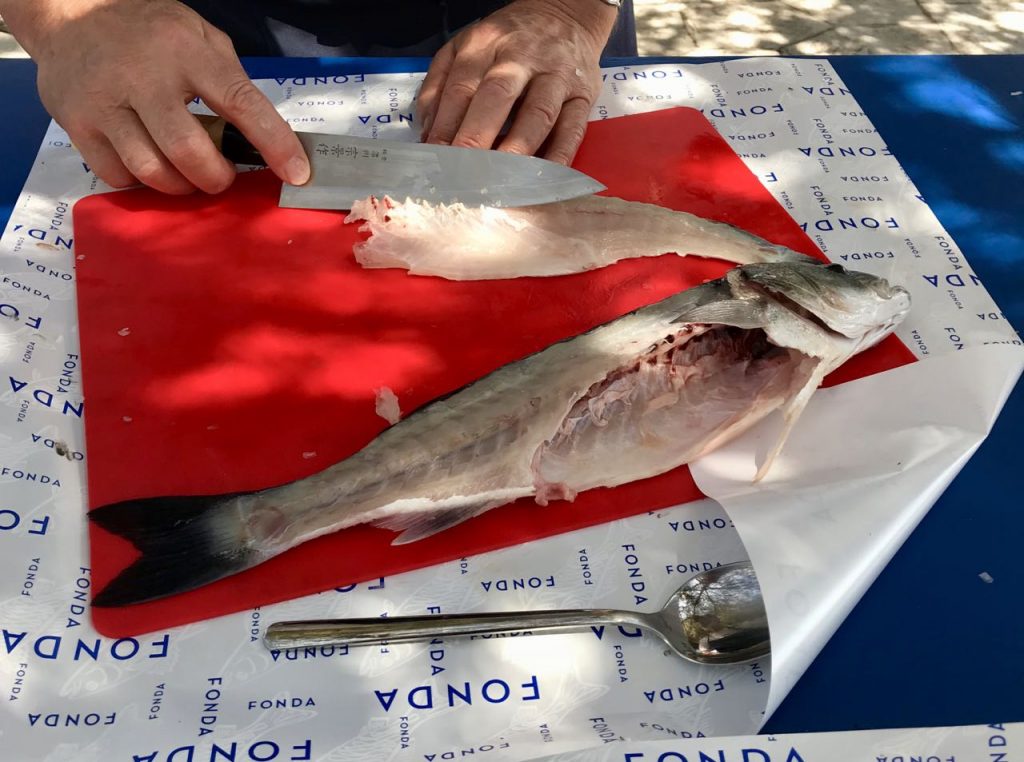
We recently spent our holiday in Slovenia and of course we tried to discover as much about food in the country as possible. I got in touch with Irena Fonda at the Fonda Fish Farm to see if we could make a visit. After she’d visited my website, she set me a challenge. “I’d love to try something that you bake”. As it would be more than a week after leaving the UK before our meeting, I must confess I was a bit stumped. Then inspiration! I’d make a Simnel cake, vacuum pack it and hope for the best.
Piran, Slovenia
On a gorgeous sunny day and a calm sea, we relax in a white boat with Gorazd Šinik who looks after Marketing and PR and Owner, Irena Fonda, Owner sailing towards their sea bass farm off the coast of Piran. We’re on Slovenia’s Adriatic coast, close to the renowned salt pans.
The reason why the sea bass farm is there at all is due to a family of 3 biologists, the Fondas. Using their expertise, they hatched a plan to produce the very best fish possible in a sustainable way. The family have been working in the area for an astonishing 800 years and their region is very, very important to them.

Do you think about where the sea bass you buy in the shop or eat at a restaurant comes from? Chances are it is intensively farmed in one of the large fish farms in Greece and Turkey or possibly Croatia or Italy – after all they produce much of what we eat.

As we reach the cages, there’s a loud flapping noise from the one nearest to us. The fish are jumping up – they’ve recognised the boat and think it is feeding time.
The cages are ideally situated. They are free floating and provide the fish with constantly changing water allowing them to move constantly.
As you can imagine, to farm fish sustainably is more labour intensive than standard fish farming. To start with Fonda make a point of choosing the very best young fry (baby fish). It then takes 6 to 8 months of hand feeding to get them to just 6 cm in size!
How old do you think the sea bass you eat is? At Fonda, it will take 3-4 years to produce a sea bass that’s ready for eating.

No chemicals are used to clean the nets as these can linger and damage the environment. They are cleaned manually and they can acquire massive amounts of growth on them during the time they are in the water.
We peer into the water and gaze at the ever swirling fish – they are so beautiful.

Irena describes the challenge of trying to sell a premium product in the general fish market when they first started. The buyers weren’t convinced that their end customers would either care or want to pay for such a product. Raising the fish over a longer time meant they had to achieve a higher price to cover costs. Gradually, over the years, working with top chefs in Slovenia, Austria and Italy, their reputation grew and grew for fish that are exceptionally fresh and good quality. They invested in great branding and a quality mark. Nowadays the fish is in high demand.
They have proved that raising fish sustainably is possible. However, it is hard to scale and to locate it in just the right place, but who knows more such farms might start up soon.
How do you tell that a fish is fresh? You might say the gills should be pink, the eyes fresh looking but in fact these can be deceptive – judicious spraying with water can make the fish seem fresher than it is. The only way is to smell the fish. It should have no smell. That is, unless it is a Fonda raised sea bass.

As soon as each Piran sea bass is taken out of the sea, a label is fixed onto the gill flaps indicating the origin and date it was caught providing a guarantee of a superior quality fish.
Filleting Fish, Tartare and Sashimi
Back on land it’s time to learn to fillet the sea bass.
The beautiful specimens we used had been caught a few hours ago.
I need to follow Irena attentively – it is too easy to slip into the way of doing something the way you always do. We set to. First of all descaling with a spoon – so much easier than scraping. and she demonstrates how take the fillets off with surprising ease leaving very little extra fish on the bones. I can imagine Monica Galetti on Masterchef approving. Our efforts are acceptable but rather ragged round the edges. More practice is needed.

Irena then shows us how to cut the fish to prepare it as tartare or sashimi. It’s all about how you cut the fish, with the grain or across it.
Meanwhile, Gorazd is busy at the BBQ cooking us lunch. Our filleted fish are added and in a few minutes, we have a feast to try. The fish is superb, flavoursome, just that right amount of firmness and juicyness.

What did we have for dessert? Why the simnel cake of course. They declared the best cake ever.
It was truly a day I will never forget. It’s a real privilege to meet someone so passionate about their business and to share their enthusiasm.
Find out more
With the small number of sea bass they raise compared to the big guys, you won’t find any in Britain. A great excuse to holiday in the wonderful Slovenia and try the fish at one of the top restaurants there.
Visits to the farm can be arranged, but it is essential to get in touch in advance.




